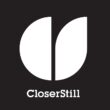It is over 70 years since Norman Cahners, the legendary US creator of B2B magazines and trade shows, introduced the world to ‘controlled circulation’. The concept of qualifying free circulation and ads-supported publishing came to account for so much of the growth in the 20th century heyday of B2B magazines, especially in the US and UK.
Cahners who went on to build the world’s most successful B2B publishing and exhibitions group (which became part of Reed, now RELX) would have admired IndustryDive, the ads-supported digital publisher followed by millions of US executives in 16 vertical business sectors from construction to pharma and catering to med-tech. At a time when digital news media is being checked by financial reality, the seven-year-old Washington DC-based company is profitable and growing fast.
IndustryDive was launched in 2012 by three longtime digital media colleagues, Sean Griffey, Ryan Willumson, and Eli Dickinson, who developed an appetite for niche audiences at US newsletter publisher Fierce Markets (where Griffey was CEO). They saw an opportunity in the rapid growth of mobile tech for business people and in the way that small niche markets were being abandoned by crumbling B2B magazines.
The company’s first office was a shop in an old grocery market. It was a bit of a change for CEO Griffey who had spent most of his career in fancy offices as a consultant at Kearney and PWC. But the startup was never a leap in the dark. He was vocal about “a huge opportunity in B2B to use mobile to capture lead gen budgets. I’m always surprised that I don’t hear more people talking about this. The first ingredient for good lead generation is discovery and the phone is an incredibly powerful discovery device. The usage patterns of consumers on Twitter, Facebook, and Buzzfeed easily prove that. Simply put, people look for new content from their phone. If we can make the experience frictionless, we can can convert discovery intentions into leads. The best part is that lead gen budgets are platform agnostic and massive.”
More than anything else, though, the Industry Dive team saw the importance of niche markets to advertisers at a time when so much advertising-dependant B2B media was being shredded by Google. “We really believed in ad markets. What we saw was that audiences were being commoditized and when they become a commodity, the ad market breaks down. If you believe in the model and you’re good at it, you need to find areas where audiences are not commoditized. That is often in very niche and vertical industries. We set up the company to not just own a single market but be able to apply the infrastructure, learnings and technology across all of them. We launched with five industries: construction, electric utility, solid waste and recycling, marketing and education. It was ambitious to start with that many, but we wanted to prove that our model could scale across different industries. There is no magic bullet to developing an audience. First and foremost, you have to deliver something that adds value to your readers on a daily basis.”
He used trade shows and LinkedIn groups to promote to readers. The best-performing verticals were broadly defined by the markets that spent the most on technology: “People don’t sell garbage trucks online but they sell software online”. The company also looked for markets with large trade shows where every attendee is a potential reader and every exhibitor is a potential advertiser.
The results are stunning.
IndustryDive has been soundly profitable for more than five years. In 2018, it made EBITDA of $5.8m on revenue of $22.4m which was 40% up on 2017 and almost five times that in 2015. Profit margins have climbed from 10% to 26% in four short years.
The company claims a total of 1.3m subscribers (mainly in North America) and a monthly reach via websites and apps of 5m. But the core business is the portfolio of daily emails of each industry’s key headlines, linking to relevant articles from around the web, recommended resources and upcoming industry events. They are well-written, easy-to-read newsletters which feature original content and analysis as well as being a one-stop-shop of industry news and comment.
IndustryDive publishes some 80-90 stories a day, with loads of bullet points and a real emphasis on quick news. This is good journalism in a neat package with no pretence about the standardisation involved: “The products we sell are the same. It’s the Southwest model—buy one type of plane and then everyone knows how to work on it.” RetailDive currently has the largest revenue but Griffey claims the company’s profitability is fairly evenly spread across its verticals.
Almost all revenue comes from ads but, crucially, less than 10% comes from web site banners and none from programmatic. Its success is the ability to generate sales leads for companies from niche audiences, and content marketing and sponsorship deals sold directly to clients. It avoids ad agencies.
The ancestry of Industry Dive is clear if you review the history of those early controlled circulation B2B niche magazines with their ‘reader enquiry cards’ helping to generate sales leads. Sean Griffey and his team have gone back to the future in developing a 21st century business news and information company which simply promises advertisers it will:
- Generate leads for your sales team
- Tell your company’s story via content marketing
- Position your company as a leader on key industry topics
- Increase brand recognition through reach and repetition
Even the composition (but not the scale) of staffing is like a traditional B2B magazine company with 60 of the 125 people involved in editorial (2-6 on each vertical), 20 in design/tech and 20 in sales.
Griffey’s traditional approach is reinforced by the canny way he eschewed venture capital to build a company which may now be worth more than $200m: “We launched at a time when everyone was raising massive rounds of venture dollars. Outside of a few hundred thousand in angel funding from local individuals, we’ve been bootstrapped the entire way. Industry Dive has been profitable since just about Year One and that remains important to us.”
The self-funding made the startup extra-careful about its investment approach, taught the team how to launch ‘publications’ at low-cost – and ensured that the three founders still own more than 75% of the equity. But there’s no lack of ambition.
After six years of rapid growth and increasing attention from media commentators (and would-be buyers), you sense that Sean Griffey is limbering up for some bigger developments, perhaps even some larger scale M&A. “In terms of ambitions, we are in 16 vertical markets right now. When we launch them, we think that each vertical should be $5-10m just in terms of digital revenue under our current product offerings. So, we have a long way to go to reach what we think is the natural potential of our current business. More importantly, there is still significant room for growth in our existing markets. We are the only niche media company I know that doesn’t have events, paid research, or subscription products. Those are all on the roadmap and represent real opportunity. Of course, the secret of media has always been to build a loyal audience and then leverage it in different ways. We absolutely believe we have the foundation for an events business, research, subscriptions, and more.”
Griffey talks openly to (and about) the stop-start stream of would-be buyers. He keeps listening but is (probably) not yet looking, not least because he can probably fund his near-term ambitions, especially in paid-for research. But you suspect that, somewhere, there is the perfect collaborative buyer or merger partner – even at this stage.
IndustryDive is an object lesson for many media startups at a time of unrivalled choice for readers and advertisers. By providing a neatly-defined package of information for a niche audience, it is spoon-feeding readers with targeted, easily-digestible information at the same time every day; and advertisers by giving them sales leads.
It, therefore, helps to meet the needs of people who, perversely, may find it more difficult to keep fully abreast of news than they did in the days when a single daily newspaper and weekly trade magazine did the trick.
More important, IndustryDive’s daily email newsletters help to focus attention on a subtle return to the role of the publisher in “pushing” information to readers after a digital revolution that appeared to swing almost everything towards “on demand”. While the move from “push” to “pull” is transforming video entertainment (from broadcast to streaming), that same approach may only have have served to weaken the readership habit for all kinds of news and information media, hence the rise of the email newsletter.
After two decades of ever more ambitious web sites and apps, are we finally realising what it takes to sustain regular readership in an era of unlimited choice and distraction?
Many traditional and digital-only publishers – both in B2B and B2C – use emails either as news or promotional media. For IndustryDive (and more publishers than currently realise it) the email is becoming the main media channel for readers – not merely an ancillary service. Many recipients of email newsletters simply do not go to the web site or use the app. Quick, easy, on time, and in your inbox. That, increasingly, is the “secret” of targeted digital media in 2019. And not just for B2B.




